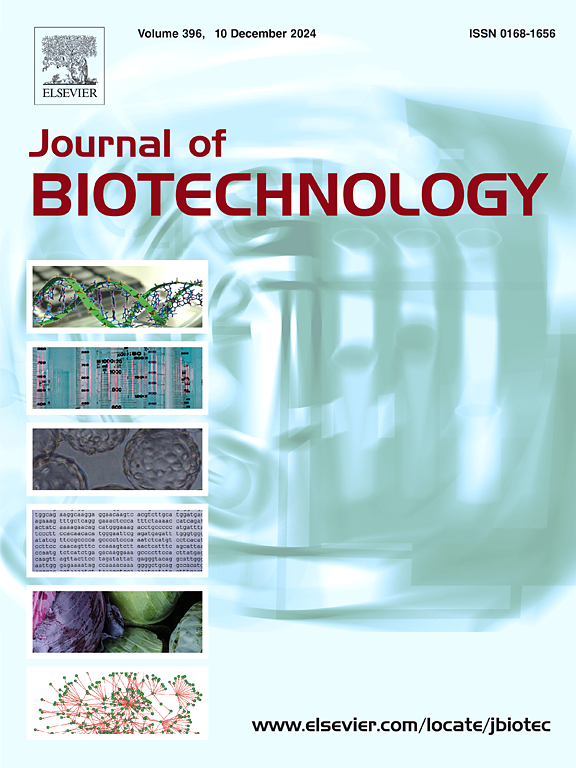High-concentration Mg2+ stress improves L-lactic acid biosynthesis of Bacillus coagulans revealed by combined analysis of transcriptome and metabolome
IF 3.9
2区 生物学
Q2 BIOTECHNOLOGY & APPLIED MICROBIOLOGY
引用次数: 0
Abstract
The application of magnesium oxide as a neutralizing agent significantly enhanced L-lactic acid (L-LA) production in Bacillus coagulans (B. coagulans), increasing titer, yield, productivity, and cell viability by 21.81 %, 7.61 %, 22.22 %, and 18.50 times, respectively. To elucidate the metabolic response to high-concentration Mg2+ stress, transcriptomic analysis identified 1021 differentially expressed genes (DEGs), with Gene Ontology (GO) and Kyoto Encyclopedia of Genes and Genomes (KEGG) enrichment analyses revealing predominant biological processes and pathway dysregulation. Metabolomic profiling detected 1196 differential metabolites, of which 216 were annotated to 129 metabolic pathways. Integrated multi-omics analyses delineated 10 core pathways involving 139 DEGs and 29 metabolites, demonstrating that Mg2+ stress enhances lactic acid fermentation efficiency through reprogramming of carbon flux, nucleic acid biosynthesis, amino acid metabolism, cofactor dynamics, membrane transport, and transcriptional regulation. This study provides mechanistic insights into B. coagulans adaptation to Mg2+ stress and proposes a viable strategy to optimize industrial L-LA bioproduction.
转录组和代谢组联合分析表明高浓度Mg2+胁迫促进了凝结芽孢杆菌l -乳酸的生物合成。
氧化镁作为中和剂可显著提高凝结芽孢杆菌(B. coagulans)的l -乳酸(L-LA)产量,使其滴度、产量、生产力和细胞活力分别提高21.81%、7.61%、22.22%和18.50倍。为了阐明对高浓度Mg2+胁迫的代谢反应,转录组学分析鉴定了1021个差异表达基因(DEGs),并通过基因本体(GO)和京都基因与基因组百科全书(KEGG)富集分析揭示了主要的生物过程和途径失调。代谢组学分析检测到1196种差异代谢物,其中216种被注释为129种代谢途径。综合多组学分析描绘了涉及139个DEGs和29个代谢物的10个核心途径,表明Mg2+胁迫通过碳通量重编程、核酸生物合成、氨基酸代谢、辅因子动力学、膜转运和转录调控提高了乳酸发酵效率。本研究为B. coagulans对Mg2+胁迫的适应提供了机制见解,并提出了优化工业L-LA生物生产的可行策略。
本文章由计算机程序翻译,如有差异,请以英文原文为准。
求助全文
约1分钟内获得全文
求助全文
来源期刊

Journal of biotechnology
工程技术-生物工程与应用微生物
CiteScore
8.90
自引率
2.40%
发文量
190
审稿时长
45 days
期刊介绍:
The Journal of Biotechnology has an open access mirror journal, the Journal of Biotechnology: X, sharing the same aims and scope, editorial team, submission system and rigorous peer review.
The Journal provides a medium for the rapid publication of both full-length articles and short communications on novel and innovative aspects of biotechnology. The Journal will accept papers ranging from genetic or molecular biological positions to those covering biochemical, chemical or bioprocess engineering aspects as well as computer application of new software concepts, provided that in each case the material is directly relevant to biotechnological systems. Papers presenting information of a multidisciplinary nature that would not be suitable for publication in a journal devoted to a single discipline, are particularly welcome.
 求助内容:
求助内容: 应助结果提醒方式:
应助结果提醒方式:


